History
History
In the origins of team BahiaRT, the main research interest was focused on artificial intelligence and multi-agent systems. The first work of BahiaRT in scientific competitions was in the 2D Soccer Simulation league.
In the same year (2006) there was an open call for joining a new Soccer Simulation demonstration league named Mixed Reality (formerly Physical Visualization). The BahiaRT was one of the qualified teams in this new league. This way, The group expanded the work to accommodate the challenges of the two leagues.
See below for a short description of these two leagues and other competitions where BahiaRT has competed. See also a summary of BahiaRT contributions and results.
2D Soccer Simulation
Football (or soccer) was the original motivation for RoboCup. Besides being a very popular sport worldwide, soccer brings a significant set of challenges for researchers while attracting people to the event. it contains a significant set of challenges for researchers:
- A collective game, for which more than one agent/robot is required to play.
- Individualistic (each agent/robot must identify relevant objects, self-localize, dribble) and cooperative (passes, complementary roles) elements.
- A dynamic and adversarial environment, with moving objects, some of them rational agents that play against your team.
In Soccer 2D Simulation League, two teams of eleven virtual agents each play with each other, based on a computer simulator that provides a realistic simulation of soccer robot sensors and actions. Each agent is a separate process that sends the simulation server communication and motion commands regarding the player it represents and receives back information about its state, including the (noisy and partial) sensor observations of the surrounding environment.
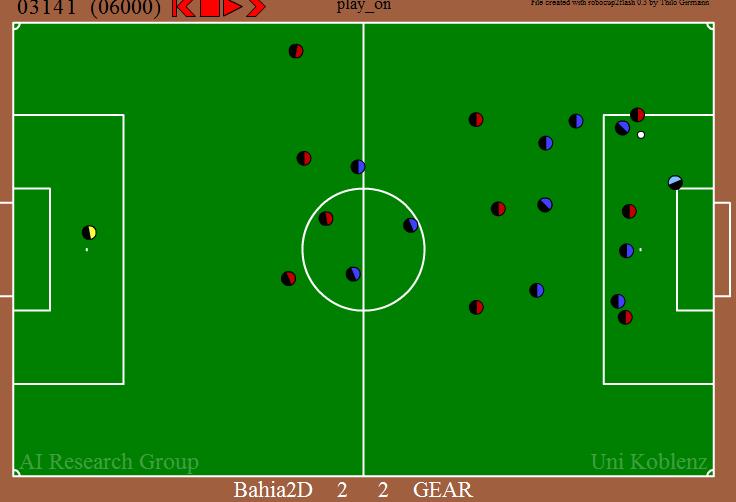
Scene in one of BahiaRT's matches
BahiaRT has competed in this league from 2007 to 2010. During this period, the team was always in the top 3 of Brazil and Latin America. BahiaRT has qualified for the World championship in all these years. As the research interest was being specialized towards AI applied to robotics, the team decided to move the efforts to 3D Soccer Simulation League.
Mixed Reality Soccer Demonstration
Mixed Reality (MR) brings virtual life and real life together. It is neither simulation nor completely real. It is both of them. The idea was developed while researchers were thinking about how to mix up two already fixed leagues. Sometimes good artificial intelligence (AI) strategies are validated in Simulation competitions, but when researchers try to evaluate them using physical robots (like small size league or medium size league for example) they do not work or need to be partially re-invented to work. Mixed Reality can fill this gap between Simulation and Physical Robots Leagues.
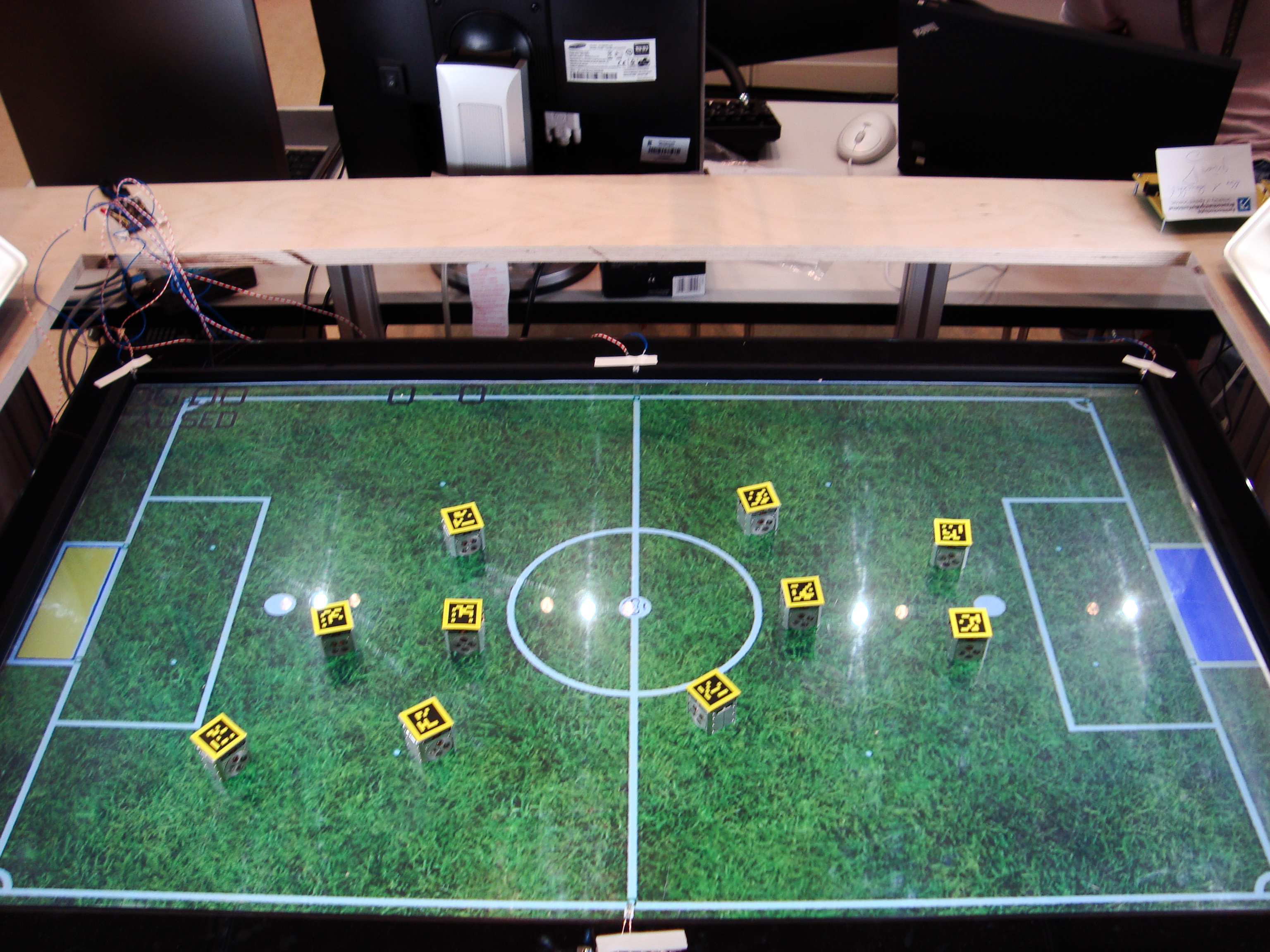
One Mixed Reality match.
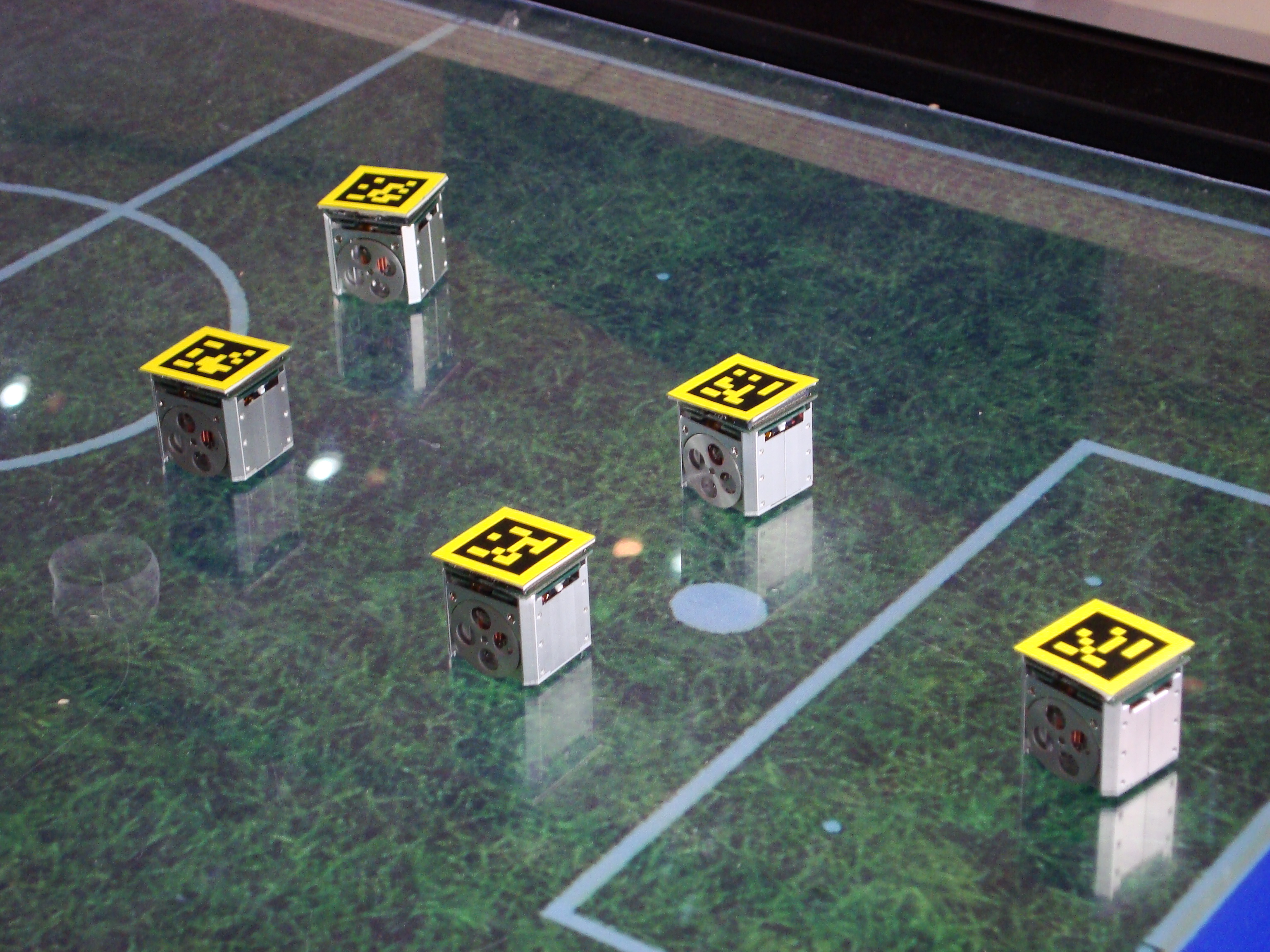
Team BahiaRT ready to play.
The idea in the future is to run Simulation agents with no changes using real micro-robots. Unfortunately, this league had survived as a sponsored league or demonstration league inside the Soccer Simulation league from 2007 to 2010. After that, due to lack of sponsorship and support from the RoboCup federation this league has finished.
But its ideas survive and can be applied in many other contexts. See a detailed description of this league in this paper.
BahiaRT was fundamental to the development of competition in the period in which it existed. The team developed the MR-SoccerSimulator - the main software required to run all the MR infrastructure - and contributed with discussions, tests, and development of all other software modules. The team has also adapted its strategies from 2D Simulation to accomplish the new requirements from real micro-robots.
In this way, the BahiaRT was one of the greatest winners of this league during its existence. The team was the champion in three Latin American and Brazilian competitions and also in one Japanese competition. BahiaRT was also the first Brazilian team to win a top 3 in the World championship (3'^rd^ place in 2009).
The acquired experience in this league was very important to current research and development.
IEEE Open
The IEEE Open has the objective of presenting a high-level challenge to the students. In this league, any equipment can be used to assemble an autonomous robot that ought to accomplish a task that is changed each year. The tasks of the IEEE Open try to reproduce the challenges of real robotics on a minor scale.
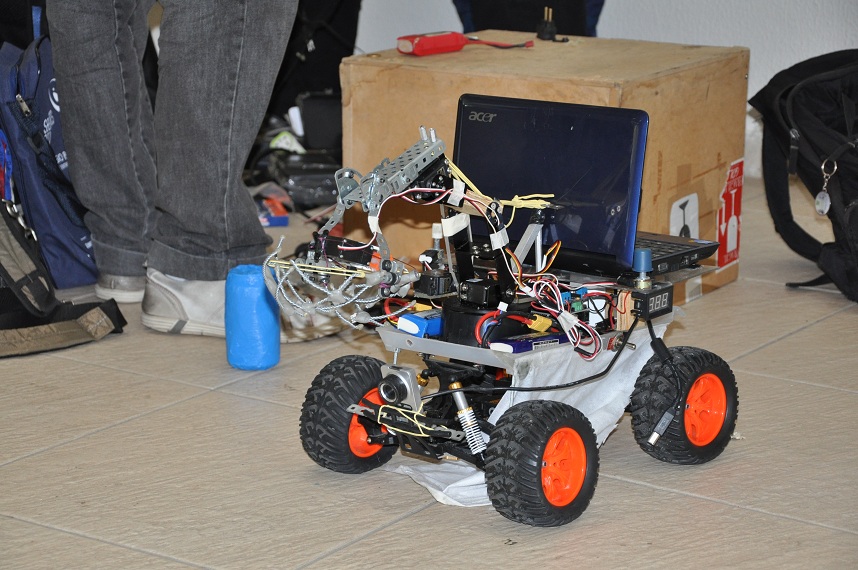
BahiaRT's robot in IEEE Open.
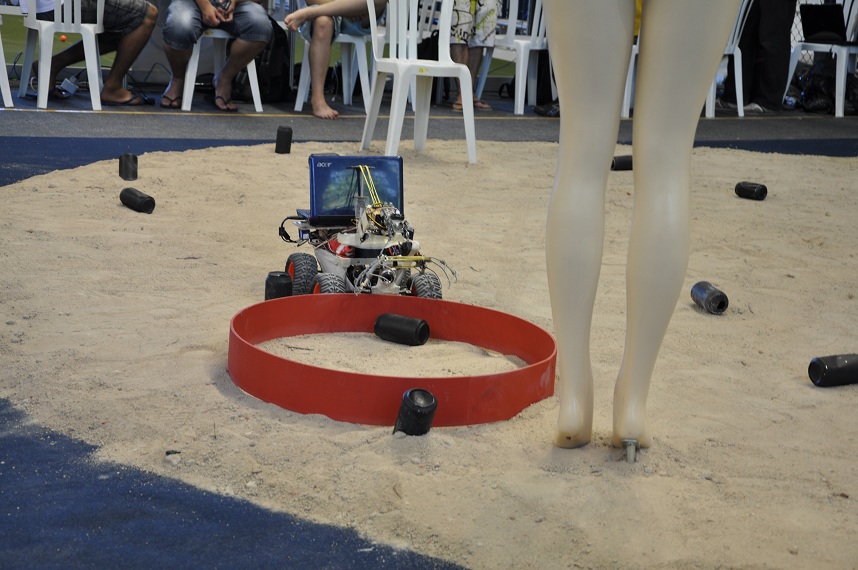
Garbage collection in beaches.
This challenge is not a RoboCup competition but a contest proposed by another scientific society: the IEEE Robotics and Automation Society (RAS). Every two or three years the IEEE RAS changes the challenge proposed in this competition.
BahiaRT has joined IEEE Open to enhance the experience of the team with real robots. The first contact with real robots was in the Mixed Reality league. In IEEE Open the team has developed its own robot hardware and software.
BahiaRT has competed in IEEE Open from 2010 to 2012. During this period, there were two different challenges: coffee picking and garbage collection on beaches. BahiaRT won second place in the latest challenge in 2012. After that, the main focus was directed to RoboCup@Home.
IEEE Very Small Size Soccer
In the IEEE Very Small Size Soccer two teams of 3 robots of up to 7,5×7,5×7,5cm play a soccer game. The robots are remotely controlled by a computer but without human intervention. The computer processes the image of a video camera placed above the field and commands the robots.
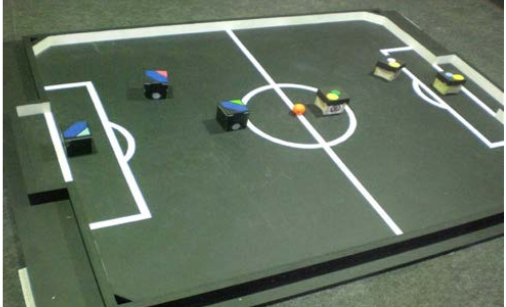
A match in IEEE Very Small Size Soccer
Despite the basic challenges of autonomous control and global computer vision, this environment is less hostile to beginning students in intelligent robotics. For this reason, the BahiaRT began in 2014 this project aimed at beginners to provide them a better learning curve. In 2018, we suspended our work with this league due to a lack of students to work on this project. However, we have plans to activate this league again in the future.
For further information see the appropriate section in Brazilian Robotics Competition site.
